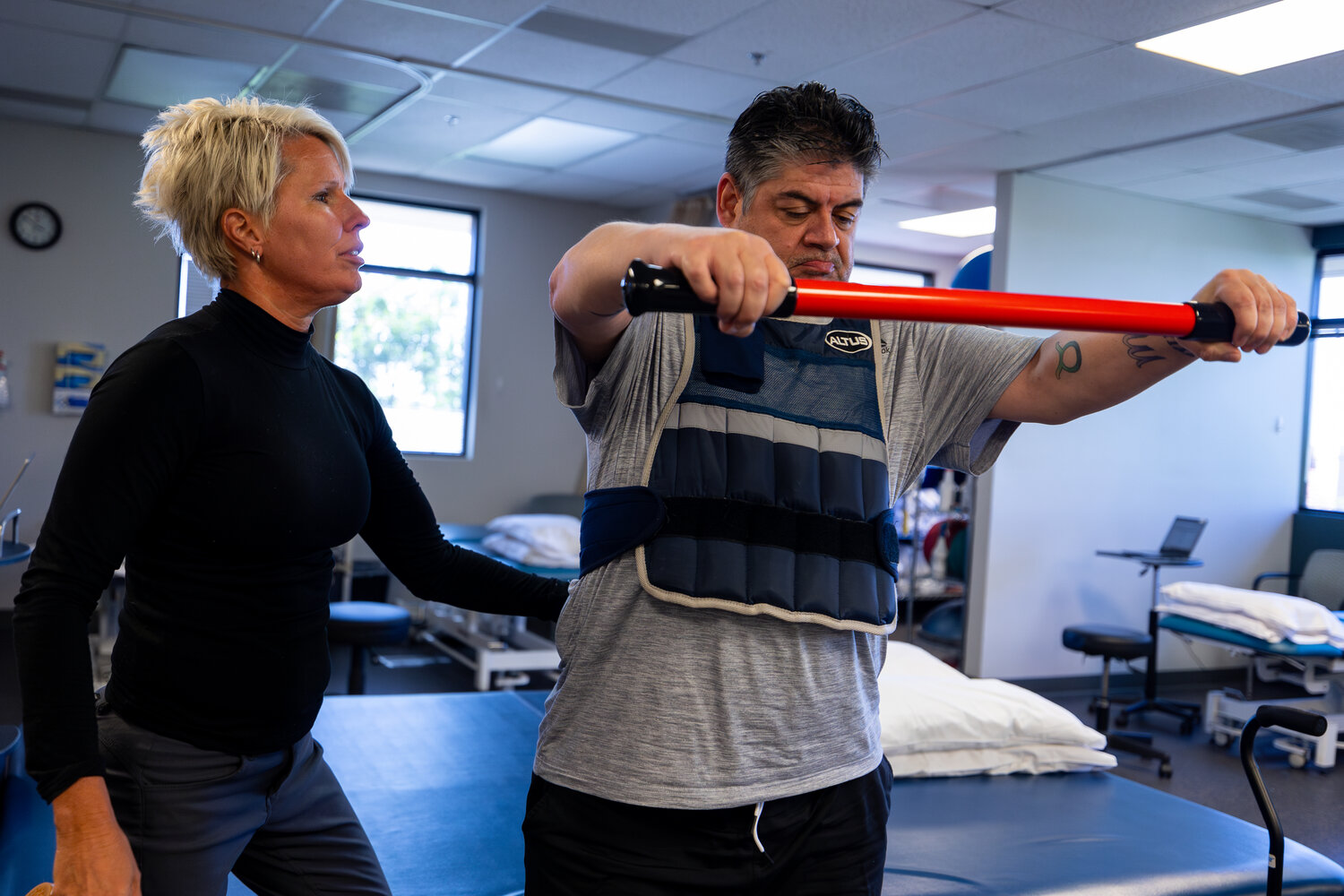You can obviously see that this facility doesn't understand patient motivation at all.
You don't understand ONE GODDAMN THING ABOUT SURVIVOR MOTIVATION, DO YOU? You create 100% recovery protocols and your survivor will be motivated to do the millions of reps needed(NO pushing required!) because they are looking forward to 100% recovery. GET THERE!
The problem is stroke researchers are not motivated to solve stroke. What the fuck is your solution to that failure? We still don't know how to motivate stroke medical 'professionals' to solve stroke to 100% recovery!
Peoria man shines light on physical therapy journey as a recovering stroke patient
Peoria resident Oscar Martinez always thought he was invincible.
That is, until he suffered a stroke the day after Christmas in 2022.
“I remember, we were waiting for our daughter and grandson to come over so we could give my grandson his Christmas presents,” Martinez, 51, recalls. “That’s when I started to sweat a lot. I called out to my wife for help, and she immediately noticed I wasn’t okay. I couldn’t move or speak. That’s when she realized I was having a stroke.”
Martinez was rushed to the hospital, and when he woke up, he was unsure of what had happened.
“The nurse came into the room and told me that I had a stroke,” Martinez says.
While a setback, Martinez remembers thinking he would bounce back in a few months. However, six months post-stroke, he realized it would be a much longer road to recovery. One he’s still facing today.
“It’s been a rollercoaster of emotions and challenges,” Martinez explains.
The symptoms of a stroke are discussed often, but Martinez and his physical therapist, Stephanie Larson with Banner Physical Therapy, want to shine a spotlight on what the rehabilitation process looks like for someone recovering from a stroke; highlighting some of the trials and tribulations that aren’t usually talked about.
“We focus on helping the patient do things like getting in and out of bed, in and out of the car, sitting down, standing up, balance training, and then of course help our patients, like Oscar, get back to activities they enjoy doing,” Larson said.
Larson added that one of the most surprising activities of rehabilitating a stroke patient is the fall prevention exercises that include practicing getting on and off the floor, as well as practicing falling safely to prevent further injury.
“Another surprising factor of rehab might be how hard we have to push these patients following a stroke in order to regain as much function as possible,” Larson says.
Martinez said the activities and encouragement Larson mentions have helped fast-track his progress.
“Thanks to these activities, I’m able to walk with the assistance of a cane and an ankle foot orthosis (AFO) - which is a device that helps stabilize my ankle,” Martinez said. “When I started physical therapy, I was in a wheelchair.”
However, Larson states that physical therapy recovery for stroke patients isn’t a "one-size fits all."
“The recovery time and process are different for every single patient,” Larson notes. “No two patients with a stroke are the same and they need to be treated with an individualized treatment plan focused on attaining their goals and regaining as much function as possible.”
Martinez is hopeful and remains positive.
“To anyone who might be going through a similar situation right now – keep pushing and believe in yourself,” urges Martinez. “Look for help in family and your community, be okay with your new normal, don’t take anything for granted. Take care of your health and your loved ones. Life really is too short.”
Banner Physical Therapy is part of a joint venture partnership between Banner Health and Select Medical’s Outpatient Division, a nationally prominent, locally driven provider of outpatient physical rehabilitation. Banner Physical Therapy offers 60 convenient locations throughout Arizona. The centers provide a wide range of services to patients, including physical therapy, hand/occupational therapy, pelvic health, cancer rehabilitation, pediatric therapy, sports medicine and work injury prevention and management.
For more information, visit selectmedical.com/outpatient.

No comments:
Post a Comment